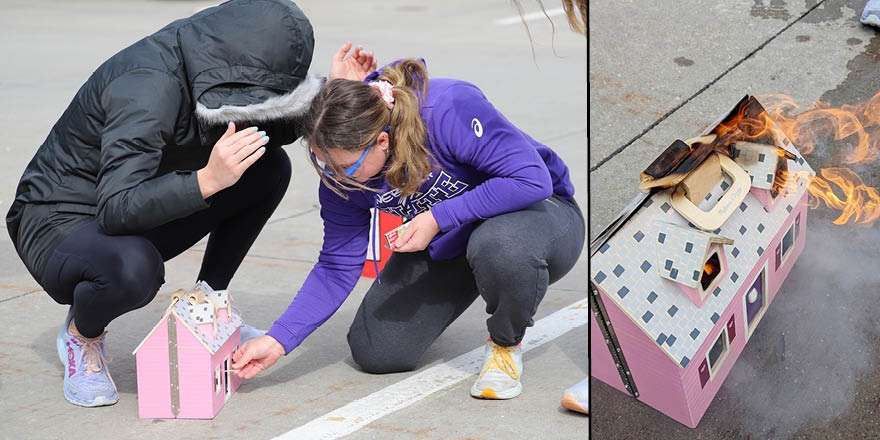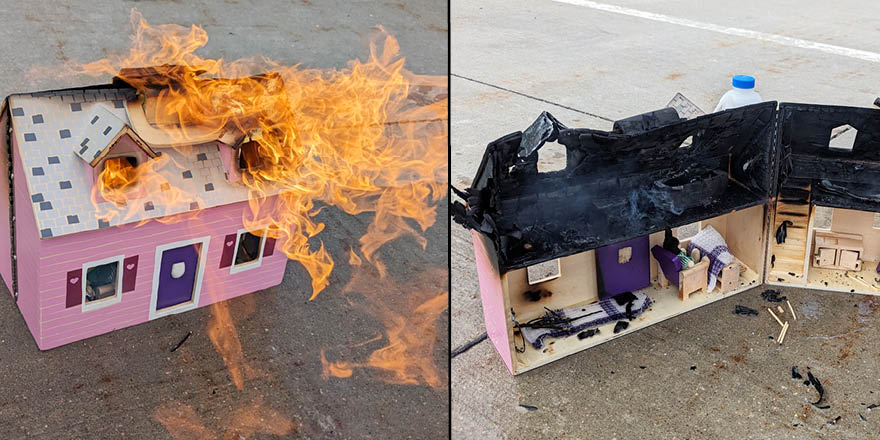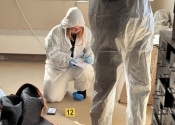
Advanced Forensic Science Students Study Arson
Rachel Cushing lit the match and placed it in the small wooden dollhouse.
“It’s going!” she yelled as flames flickered through the window. She and her classmates watched as the fire consumed the tiny model home.

The recent experiment used to study arson was part of Associate Professor Amanda Roe’s advanced forensic science course.
In the intro to forensic science course, students compare evidence types, practice collection methods, and discuss the issues in crime scene investigation. Advanced forensic science furthers the discussion by looking at specific cases and the evidence involved.
“In the case of arson, the class discussion focuses on how it is often used to cover up a crime and how that impacts the investigation and evidence collection,” Roe said. “The students also discuss how the facts of fire science have changed, particularly in the last 30 years.”
For the activity, students installed furniture in an empty dollhouse. They add fire load, which includes blankets, pillows, curtains and rugs, and accelerant if desired. Prior to setting the blaze, the students hypothesize how the fire will move and grow.
“Once the fire is put out, students open their houses and compare what they see with what the groups thought would happen,” Roe said. “This activity also allows students to view in real time many of the characteristics that were considered evidence of arson but were later determined to be normal, non-arson, fire patterns.”












